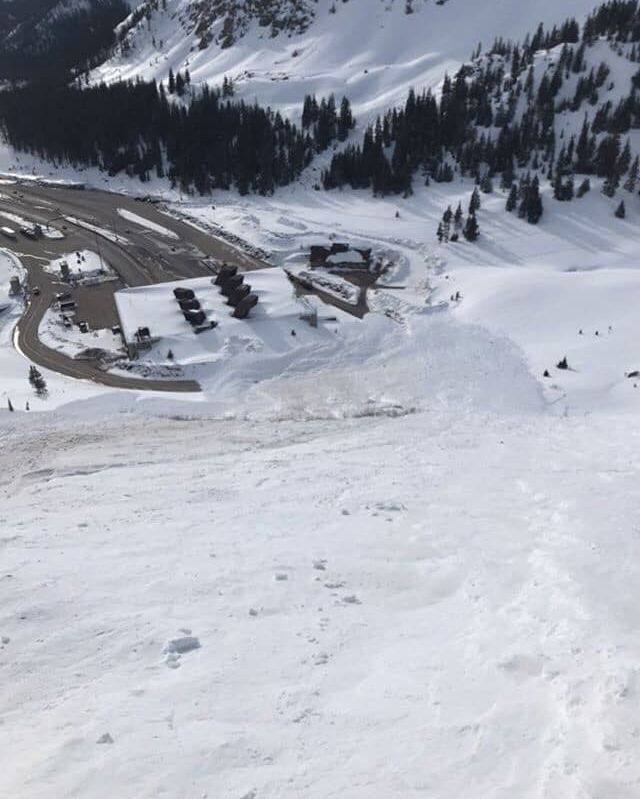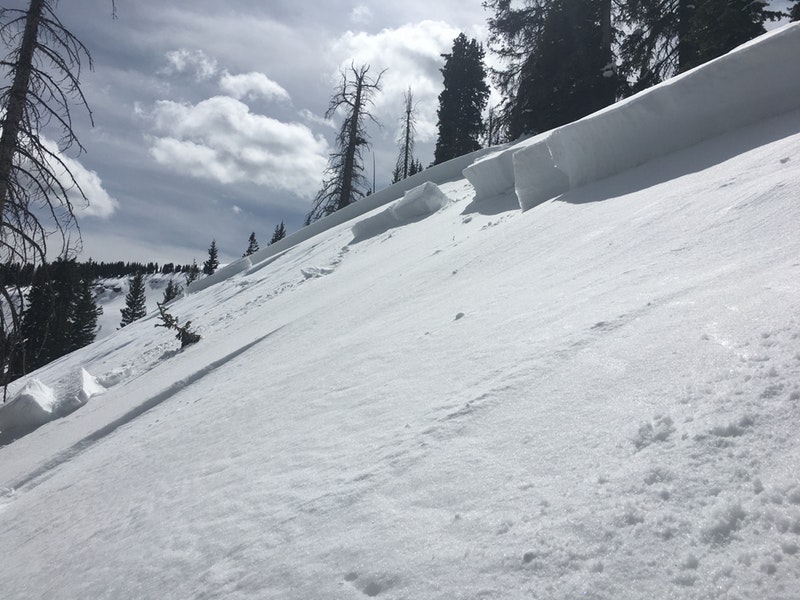
Two snowboarders triggered a small avalanche that released a larger, more powerful avalanche that buried an access road of the Eisenhower Johnson Memorial Tunnels in Colorado on Wednesday, March 25, 2020. Parts of the road were buried 20 feet deep. The Colorado Avalanche Information Center reports that the slide caused substantial damage to highway infrastructure. The CAIC said in a report:
This was a hard slab avalanche triggered by a snowboarder. The avalanche was medium-sized relative to the path, and large enough to bury and destroy a car, damage a truck, destroy a wood frame house, or break a few trees. The avalanche was triggered by a snowboarder riding through wind-drifted snow on a steep cross-loaded terrain feature. The initial avalanche was relatively small. As it ran down the slope, it stepped down to deeper weak layers and eventually gouged down to the ground. (HS-AR-R3D3-O).The avalanche damaged a remote avalanche control unit, used to manage the hazard to the Loop Road, and covered over 400 feet of the roadway with debris up to 20 feet deep. The Loop Road is a service road that is open to the public, but mostly used by highway maintenance workers. It connects the eastbound and westbound portions of Interstate 70 and runs over the top of the west portal of the Eisenhower Johnson Memorial Tunnels.
The backcountry avalanche forecast this day read:
You can trigger avalanches that break at the interface between recently drifted slabs and the older harder snow below. You are most likely to find dangerous conditions on higher elevation, wind-prone, easterly-facing slopes were the prevailing winds thickened these slabs. If you trigger an avalanche at the interface between the recent and old snow it can break 2 feet deep and propagate wider than you might think. Look for recent cornice formation or smooth rounded pillows of snow to identify possibly dangerous areas. You can find safer riding options in wind-sheltered areas and below treeline.
Fortunately, neither snowboarders were caught in the slide and no one was on the highway below as they would have surely been buried by the massive avalanche debris. The CAIC urges backcountry users going out into the mountains right now for exercise to please do so responsibly. This means “following social distancing requirements, travel restrictions, not taking actions that risk pulling emergency service workers away from the important work they’re doing, or compromising their ability to continue that work.”
If you must recreate in the backcountry during the Coronavirus crisis, please follow these guidelines:

Has this been appealed? Is there a published opinion. I’d like to hear what the courts think are negligent backcountry behavior.